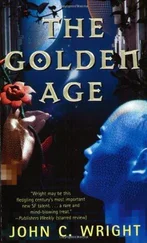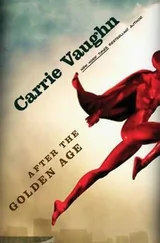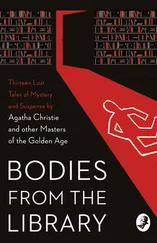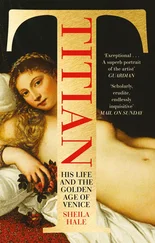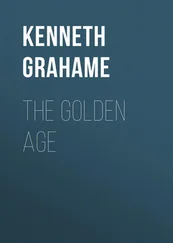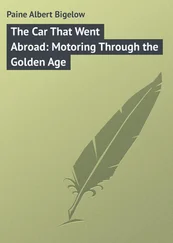Michal Ajvaz - The Golden Age
Здесь есть возможность читать онлайн «Michal Ajvaz - The Golden Age» весь текст электронной книги совершенно бесплатно (целиком полную версию без сокращений). В некоторых случаях можно слушать аудио, скачать через торрент в формате fb2 и присутствует краткое содержание. Год выпуска: 2010, Издательство: Dalkey Archive Press, Жанр: Современная проза, на английском языке. Описание произведения, (предисловие) а так же отзывы посетителей доступны на портале библиотеки ЛибКат.
- Название:The Golden Age
- Автор:
- Издательство:Dalkey Archive Press
- Жанр:
- Год:2010
- ISBN:нет данных
- Рейтинг книги:4 / 5. Голосов: 1
-
Избранное:Добавить в избранное
- Отзывы:
-
Ваша оценка:
- 80
- 1
- 2
- 3
- 4
- 5
The Golden Age: краткое содержание, описание и аннотация
Предлагаем к чтению аннотацию, описание, краткое содержание или предисловие (зависит от того, что написал сам автор книги «The Golden Age»). Если вы не нашли необходимую информацию о книге — напишите в комментариях, мы постараемся отыскать её.
is Michal Ajvaz’s greatest and most ambitious work.
The Golden Age
The Golden Age — читать онлайн бесплатно полную книгу (весь текст) целиком
Ниже представлен текст книги, разбитый по страницам. Система сохранения места последней прочитанной страницы, позволяет с удобством читать онлайн бесплатно книгу «The Golden Age», без необходимости каждый раз заново искать на чём Вы остановились. Поставьте закладку, и сможете в любой момент перейти на страницу, на которой закончили чтение.
Интервал:
Закладка:
“I was unable to decipher the tiny letters in the notebook which the man sitting on the windowsill was holding, so I asked the owner of the gallery for a magnifying glass. With her help I read part of a mythological tale about the goddess of the glitter of gold and a poor fisherman. It seems that the man in the armchair was a linguist or an historian, a university professor perhaps. The other two might have been his assistants or students. I think it was the owner of the Zephyrus who had given the professor the photographs of the inscriptions in the speos and that his research had enabled him to decipher their script and to translate some of them. Now he had invited his colleagues or pupils to him so he could familiarize them with the results of his work.
“The text carved into the rock, a translation of which was written in the notebook, told of the goddess of the glitter of gold, who falls in love with a fisherman. The fisherman refuses her because he loves a girl in the neighbouring village. The goddess, insulted and angry, turns the girl into a shoal of thirty-three crabs. For a long time the girl cannot get used to living in so many bodies; she runs to and fro on the sand of the shore on her hundred-and-sixty-four legs, desperately pressing all her crab-bodies together as if willing them to grow together. But they remain separate. She goes to the fisherman’s shack in order to watch him; she turns on him sixty-six sad eyes on stalks; pathetically and tenderly she extends all her claws towards him. The fisherman becomes used to the crabs and whenever he returns from his fishing he throws them some fish from his catch.
“The girl doesn’t want to reveal who she is because she is ashamed of her crab form and still more of the loss of her singularity. But one evening she is so lovesick that she knows herself to be able no longer to live in anonymity alongside the man she loves. When the fisherman returns from his work the crabs gather in front of his hovel and there in the sand form their bodies into a letter, and then into a second and a third. Astonished and deeply moved, the fisherman reads in the crab-letters the sad news of what has become of his lover. From this moment on the girl transformed into crabs shares the fisherman’s home. She teaches herself to do light housework so she can be at least a little useful. Every day she waits patiently for him to return from the sea, and when in the evening he reaches the shore she runs down to meet him. Then they talk together long into the night, just as they did when the girl was still in a single, human form, but with the difference that the girl now writes her answers in letters she forms with her crab-bodies, dashing around from place to place on her reversible legs. When the goddess finds out about this, she is so angry that she takes her revenge on the fisherman by turning him into the left ear of a small woodland rabbit. The text ended in the middle of a sentence; the story must have continued over the page, but this could not be seen. So I didn’t find out whether the thirty-three crabs and the left ear of a rabbit found a way to communicate and to declare their love for each other.”
Leibniz and the hermaphrodite
“After that it took me quite a long time to find another scene which belonged in the story of the wrecked yacht. In the old quarter by the harbour there was a house built into the ruins of a cloister. The columns of the erstwhile cloister, which no longer had weight to bear, stood in the house’s not particularly well-maintained interior garden among bushes and large, colourful flowers. Leading into this interior garden was a door and the wide window of a sculptor’s studio on the ground floor of the house. In the gloom of the studio the outlines of sculptures could be seen, and there were several of them in the garden itself. Labels bearing titles had been attached to the plinths of some of these. A bust standing on what was left of a stone column was labelled ‘Self-portrait’ this was a likeness of the owner of the Zephyrus . When he wasn’t sailing the seas he was a sculptor, and he worked in this garden studio.
“Glinting in the rays of the sun which had found their way through the leaves was a bronze statue. On its pedestal I read ‘Leibniz discovers infinitesimal calculus.’ And indeed the statue was a life-size likeness of Leibniz, deep in thought and wearing a periwig. The philosopher was seated on a low stool, resting his chin on one hand and holding in the other Pascal’s “A Treatise on the Sines of a Quadrant of a Circle,” the reading of which Leibniz declared to have led him to the theory of infinitesimal calculus. ‘I have discovered here a light which the author did not glimpse,’ Leibniz wrote to Guillaume de l’Hôpital. In his contemplation the philosopher had relaxed his grip on the book and it was slowly slipping from his fingers, which perhaps was supposed to symbolize his gradual disentanglement from the original mathematical theories of Pascal. There was a small shaggy dog waiting intently for the book to fall from Leibniz’s hand so it could claim it for itself…”
“You’re confusing me. Was this a real dog or a bronze one?”
“It was part of the statue, of course, so it was bronze. It was bronze and painted on the picture. The statue depicted the ideas of Leibniz in an original manner. It was similar to when someone’s visions and ideas are painted onto a picture with their figure, when the painter puts these in the space next to the figure’s head. (Usually the figure has the wide-open eyes of the visionary or his eyes are cast downwards to show that he is immersed in his inner world.) In front of Leibniz in the air (but in fact attached to the statue by thin wires) was a geometric diagram — a quadrant bounded by a horizontal line x and a vertical line y (the lines were drawn by metal bars and the letters were soldered on to these). At point I, in the upper part of the quadrant, a tangent was made, and this — at points A and B — sprouted two metal abscissae, one parallel to line x and the other to line y . They intersected at point C inside the quadrant, thus giving the catheti of a right triangle whose hypotenuse was the segment AB in the tangent.”
“I don’t understand this at all, nor can I imagine it. I know very little about mathematics,” Baumgarten protested.
“It’s simple, I’ll show you,” said the thief, taking off her black glove and drawing a quadrant in the snow with her index finger. But as she stretched to describe its base and sagitta, the y beneath her gave a fearful crack and in terror she grabbed Baumgarten by his dressing gown. He suggested she leave off the explanations: for the listener’s understanding of the story of the wrecked boat a knowledge of infinitesimal calculus was probably not altogether necessary.
“You’re right,” the girl conceded. “You should just know that the right triangle ABC plays an important role in all of this and that Leibniz realized that if we reduce the horizontal base of this triangle, correspondingly we reduce the second cathetus so that the triangle will always remain homothetic; the relation of the two catheti maintains a constant value which is a characteristic of the curve of the line at point I. The infinite reduction on which Leibniz was meditating was expressed in the statue by three fine wires leading from the apex of the triangle which gradually drew nearer to one another before coiling themselves into a spiral. The coiling wires formed triangles in their midst, each smaller than the last. On one of the arcs of this spiral of ever-smaller triangles, which disappeared into the trees, sat the sculptor’s tamed parrot, which was green with a red head and was holding a date in its mouth.
Читать дальшеИнтервал:
Закладка:
Похожие книги на «The Golden Age»
Представляем Вашему вниманию похожие книги на «The Golden Age» списком для выбора. Мы отобрали схожую по названию и смыслу литературу в надежде предоставить читателям больше вариантов отыскать новые, интересные, ещё непрочитанные произведения.
Обсуждение, отзывы о книге «The Golden Age» и просто собственные мнения читателей. Оставьте ваши комментарии, напишите, что Вы думаете о произведении, его смысле или главных героях. Укажите что конкретно понравилось, а что нет, и почему Вы так считаете.

